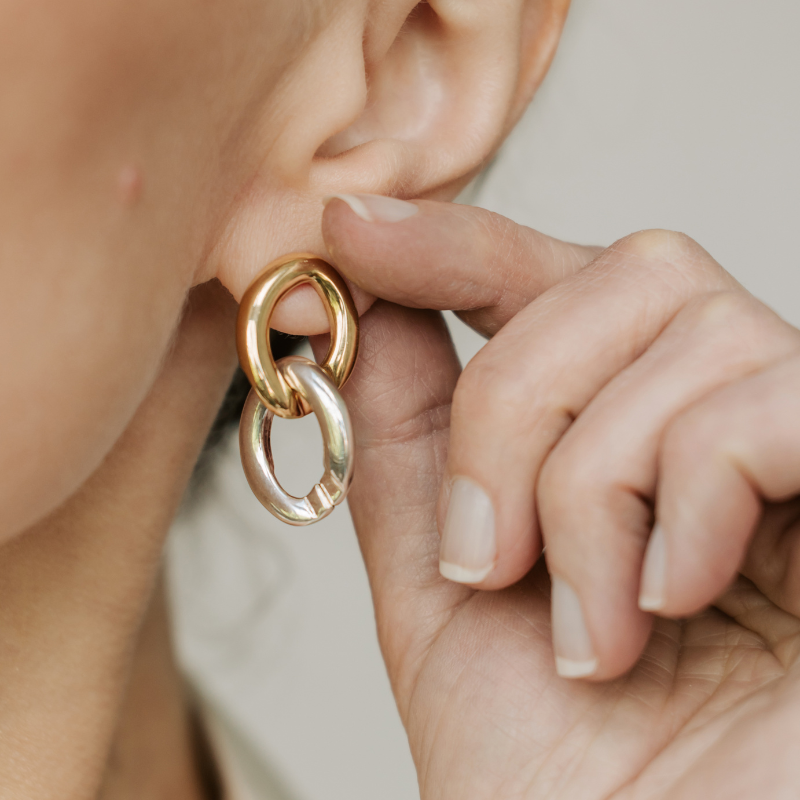Don’t call me a sapphire
The beautiful stone in shades of blues and violet that you see in these pieces is called tanzanite. With its blue colouring it’s easy to confuse tanzanite with sapphire, but they’re not the same.
Tanzanite is found in only one place in the world – near Mt Kilimanjaro in Tanzania (kinda obvious when you think about it, huh?).
Most of the gemstones we treasure today have been used and valued for hundreds of years, and tanzanite is a newbie to the team by comparison. Discovered in the late 1960s by cattle herders – according to legend – after parts of Tanzania was burned by a lightning fire. The herders noticed a deposit of brown crystals had become a beautiful purply-blue colour due to the heat of the fire.
Tanzanite begins its life as zoisite [zoy-site] – a brownish or yellowy crystal that’s valuable in its own right. Tanzanite is formed when zoisite is subjected to intense heat – this can occur on purpose with heat treatment, or naturally, like in the lightning fire the herders witnessed.
Technically, tanzanite could be called ‘blue zoisite’, but staff at Tiffany’s & Co, who had exclusive selling rights when the stone first came on the market, coined the term ‘tanzanite’ to emphasise its exoticness. The name caught on and is what the stone is most commonly known as today.
Tanzanite has a Mohs hardness rating of 6.5-7, which means it will require a little more care than the harder sapphire or diamond, and we don’t recommend its use for an engagement ring or wedding band as they have very long, hard lives – a diamond can withstand making mud pies after sport on Saturday morning, building a treehouse or changing a tyre, and pretty much anything you throw at it. Tanzanite is a little more of an indoors kinda gem and is better suited for a necklace or earrings, where it gets less bumps and bruises, or for a ring you don’t wear every day. It is best to remove tanzanite jewellery before doing abrasive activities like gardening, heavy cleaning, or anything with chemicals, for example, to keep it from becoming damaged.
This gemstone exhibits a colour trait called trichroism [try-crow-ism], which means that when light is shined on it in the right way it can shine different colours – sometimes showing flashes of dark blue, red, or deep bourbon colours.
Its rarity and beauty meant that tanzanite quickly became desired and valuable, and in 2002 it became one of only six gemstones to be added to the official birthstone list since its creation in 1912 by the American Gem Trade Association. It was added as an additional birthstone for December alongside turquoise and zircon.
Tanzanite is much rarer than diamonds and is valued for its breath-taking colour and depth. Shades can vary from pale lilac to sapphire-blue to deep purple-blue, with various indigos and violets in-between, and they really need to be seen to be fully appreciated.
To see them for yourself, visit us at Showcase Jewellers Te Awamutu – we can work with our numerous stone merchants to source the perfect colour preference for you.













